

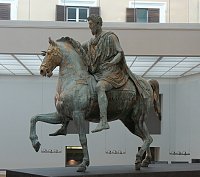
|
Between the 12th century and the early 16th century, this statue stood in the piazza before the palace and church of St. John Lateran. Then in 1538 Pope Paul III selected this gilded bronze, larger than life statue for the center of Michelangelo's pavement design for the Capitoline Hill. Today a copy stands in this spot while the original, now protected from air pollution and carefully restored, is in the Capitoline Museum. This statue was preserved during the Middle Ages because it was revered as a statue of Constantine, considered the first Christian emperor. More than twenty bronze equestrian statues of various emperors and generals had apparently existed at the end of the imperial period but they had been melted down for their valuable metal (as well as for the fact that they represented pagan leaders). This type of statue was an important imperial portrait--a way of signifying heroism and authority. It was influential on later artists, including the first in a long line--Donatello (Gattemelata) and Verrocchio (Equestrian Monument of Bartolommeo Colleoni). | |
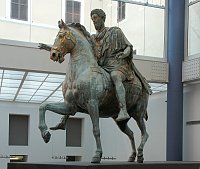
|
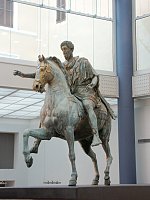
|
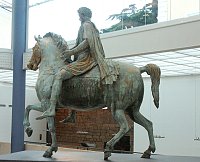
|
The gestureScholars have speculated that a barbarian enemy was once cowering beneath the horse's raised foreleg suing for mercy. Thus the raised right arm, in addition to being a greeting, could also signify the emperor's clemency. Although he seems to be a military figure, in a tunic and short cloak, he wears no armor and carries no weapon. |
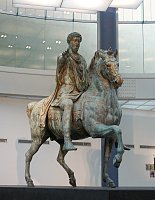
|
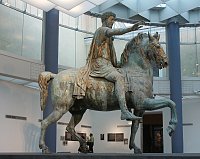
|
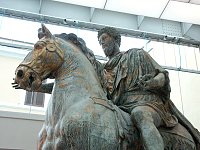
|
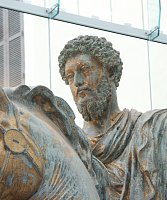
|
The face of a philosopherIn addition to being a successful military commander, Marcus Aurelius was also a philosopher, indicated by his full beard (a fashion inaugurated by Hadrian to signify intellect) and his curly hair. |
Different scalesThe horse and rider are in different scales. In fact, recently it has been speculated that rider and horse were cast separately and in fact not intended to be in the same piece. In any case, the scale difference is not immediately noticeable and serves to emphasize the importance of the commander. |
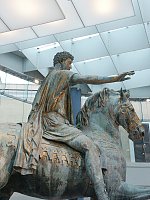
|
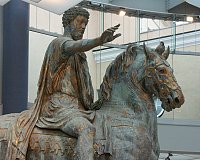
|
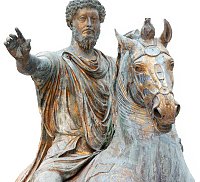
|
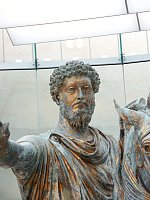
|
The picture on the left has been photoshopped to eliminate the background. It's too time-consuming to do this with all the photos. |
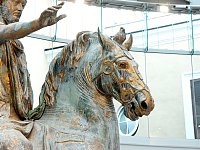
|
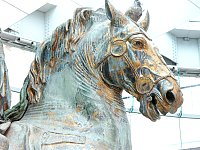
|
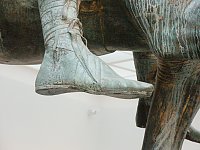
|
 Go to the Index of works in the Capitoline Museum in Rome.
Go to the Index of works in the Capitoline Museum in Rome.
 Click here to return to index of art historical sites.
Click here to return to index of art historical sites.
 Click here to return to index of artists and architects.
Click here to return to index of artists and architects.
 Click here to return to chronological index.
Click here to return to chronological index.
 Click here to see the home page of Bluffton University.
Click here to see the home page of Bluffton University.

